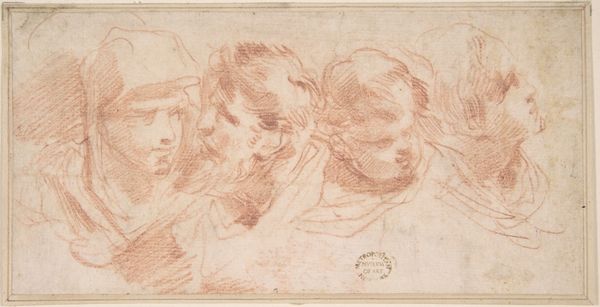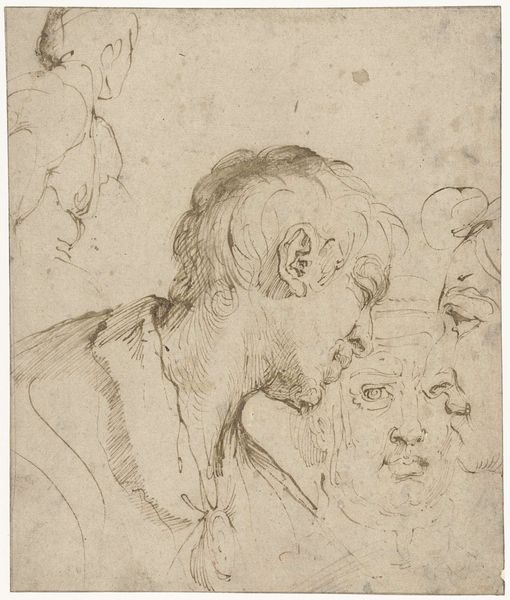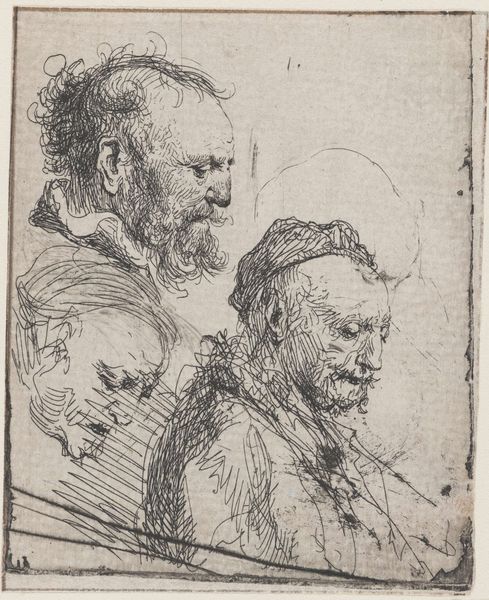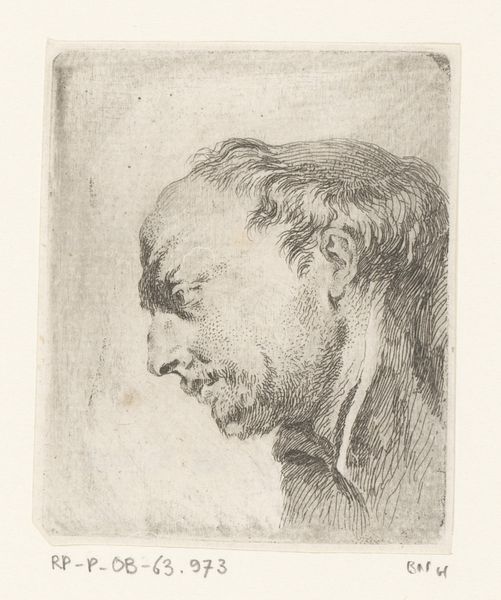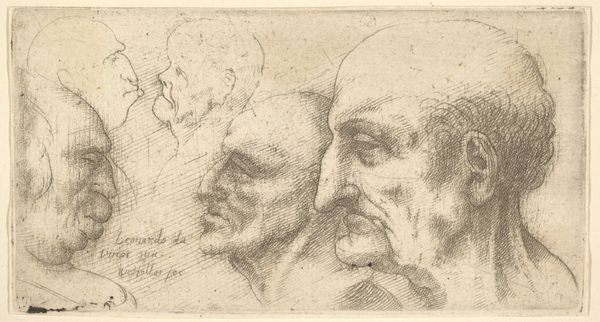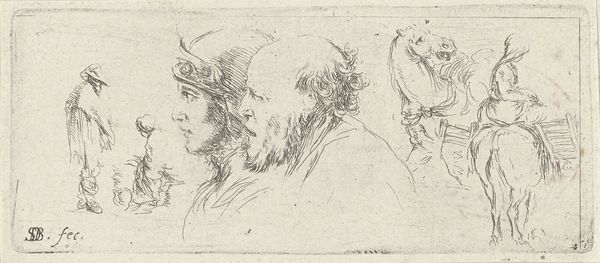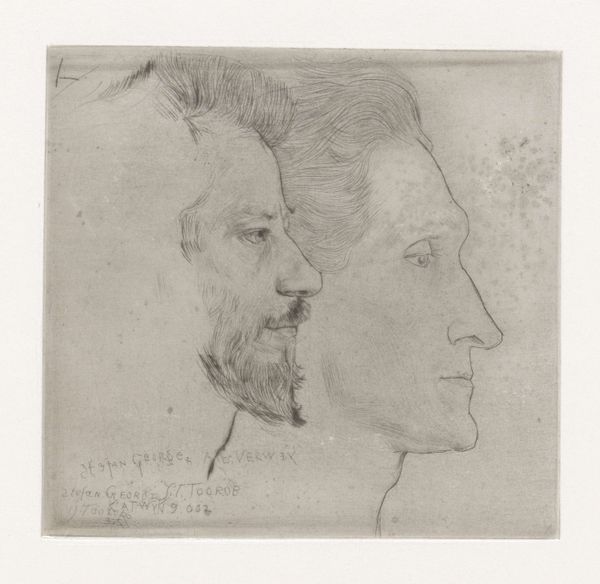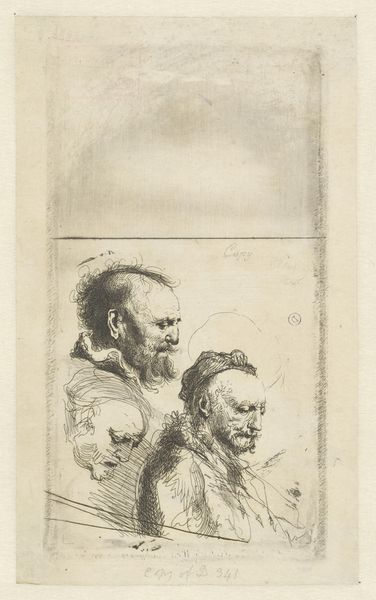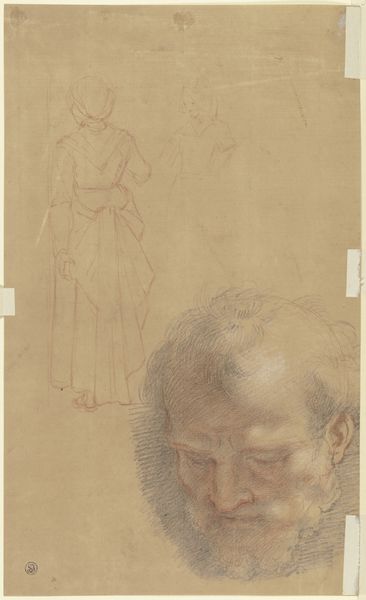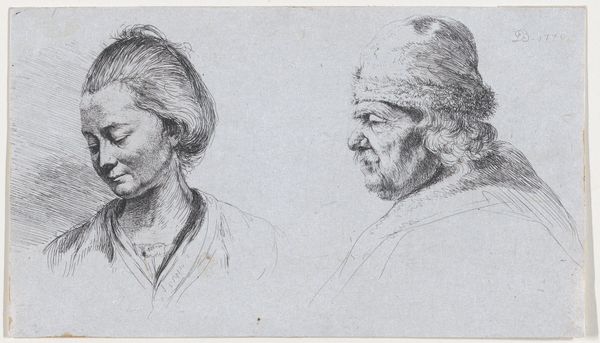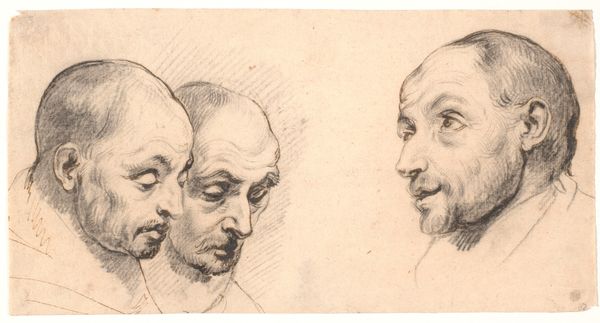
Two Male Heads in Profile to Right 1765 - 1810
0:00
0:00
drawing, print, pencil, graphite
#
portrait
#
drawing
# print
#
charcoal drawing
#
pencil drawing
#
pencil
#
graphite
Dimensions: sheet: 23 1/4 x 17 15/16 in. (59 x 45.6 cm)
Copyright: Public Domain
Editor: This graphite and pencil print, "Two Male Heads in Profile to Right," likely created between 1765 and 1810 by Jakob Matthias Schmutzer, presents a rather intriguing composition. I'm struck by how the men seem to be gazing towards something unseen. What can you tell me about it? Curator: Given the period and the artistic conventions of the time, such paired portraits often functioned within a network of social and intellectual exchange. Consider, who were these men, or rather, who did Schmutzer want us to believe them to be? Editor: Hmm, so, are you suggesting these aren’t just portraits of individuals but perhaps ideals or even archetypes, presented for a specific audience? Curator: Precisely. Think about the printmaking industry in the late 18th century, the rise of academies, and the importance of disseminating knowledge through visual means. Were these images meant for collectors, students of art, or perhaps a broader public eager to consume classical ideals? How would this affect how they are interpreted? Editor: It makes me wonder, what kind of statement Schmutzer was making through this particular pairing. Their expressions seem quite different. Was he trying to convey a certain dynamic? Curator: Absolutely, and that brings us to the politics of imagery. Schmutzer was not merely recording appearances but crafting a message. Think about what ‘types’ are here presented through physiognomy. Do their placement and expressions reinforce existing hierarchies or challenge them in subtle ways? The art world was itself deeply connected to power structures, so exploring such issues is useful. Editor: This discussion has made me consider the piece in an entirely new light, considering its potential audience and social meaning. I originally saw two men, and now, I am seeing historical communication. Curator: Exactly. By understanding the context in which it was produced and consumed, we move beyond a purely aesthetic appreciation. It's a reminder that art is always in dialogue with the society that creates and receives it.
Comments
No comments
Be the first to comment and join the conversation on the ultimate creative platform.

